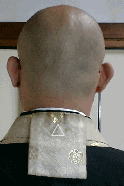Hello all! I saw that there was a previous thread related to Iconography as far as how Buddha looks in the Soto school. I am curious as to whether there are symbols which are commonly used in Soto and symbols which are not. For example, I imagine the vajra and Fudo Myoo are more popular in the Shingon sect. I've seen other icons, such as the manji, the Dharma wheel, and etc.
I am hoping to perhaps do some artwork involving symbols, some of which may use symbols more predominantly from other Zen traditions, but I want to stick mostly with the Soto tradition.
I am hoping to perhaps do some artwork involving symbols, some of which may use symbols more predominantly from other Zen traditions, but I want to stick mostly with the Soto tradition.
 )
)









Comment